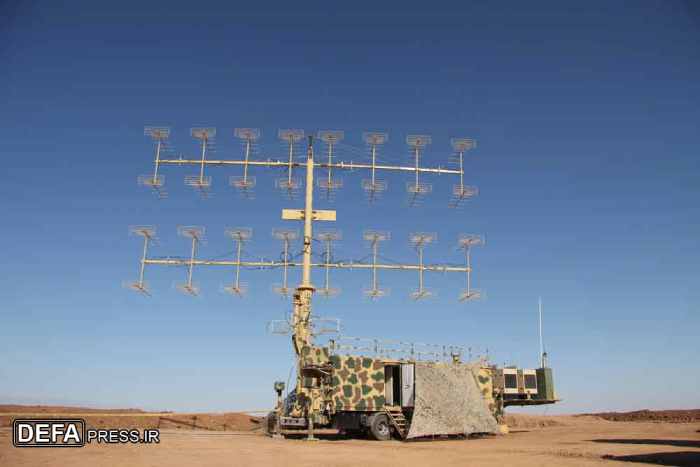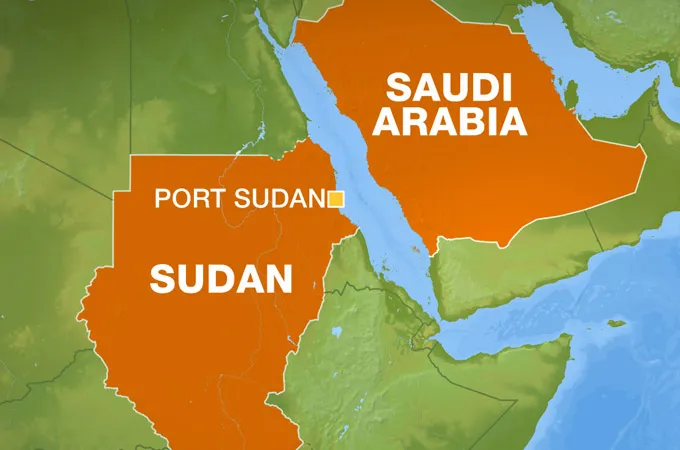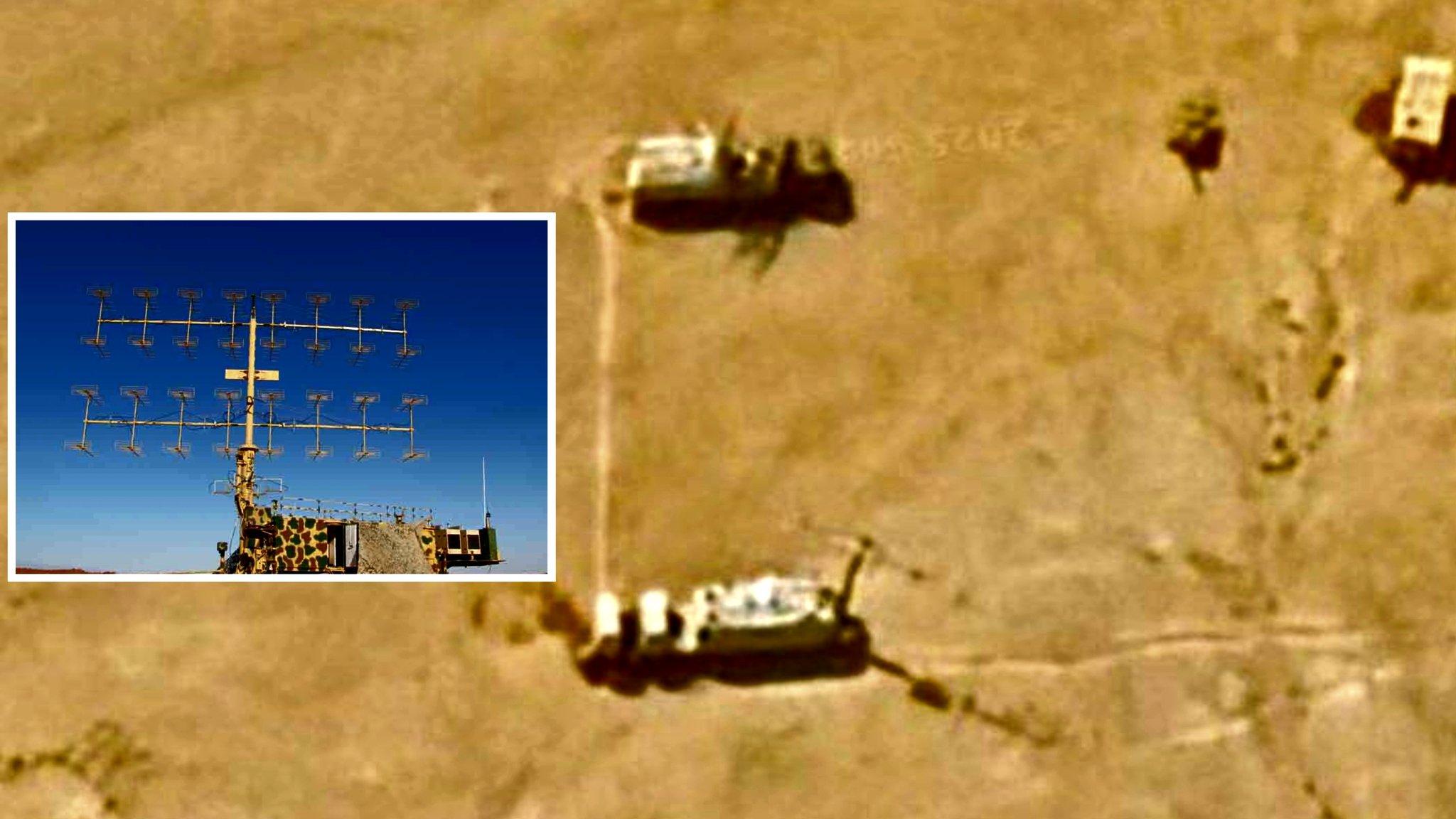Iran Projects Power into Africa: Matla Al Fajr-1 Radar Deployed in Sudan to Dominate Red Sea Skies
Further intelligence assessments reveal that additional units of the Iranian-built radar have been deployed along the Red Sea coastline near Port Sudan, underscoring Tehran’s growing strategic interest in a region critical to both commercial maritime trade and regional military balance.
(DEFENCE SECURITY ASIA) — High-resolution satellite imagery has confirmed the presence of Iran’s Matla Al Fajr-1 radar system at the Al Bahri Military Base, strategically located near Khartoum, Sudan.
Further intelligence assessments reveal that additional units of the Iranian-built radar have been deployed along the Red Sea coastline near Port Sudan, underscoring Tehran’s growing strategic interest in a region critical to both commercial maritime trade and regional military balance.
The Matla Al Fajr-1 radar, developed by Iran’s Ministry of Defence and Armed Forces Logistics, reflects the country’s broader ambition to cultivate indigenous capabilities in radar and air defence systems as part of its self-reliance doctrine.
Unveiled publicly in the early 2010s, the system is equipped with high-frequency passive radar technology, rendering it significantly more resistant to detection and electronic jamming—an advantage in high-threat electromagnetic environments where stealth and survivability are paramount.
This advanced radar system is now fully integrated into Iran’s layered national air defence network and is also believed to have been exported discreetly to several of Iran’s strategic partners across the Middle East and Africa.
Iran’s calculated deployment of the Matla Al Fajr-1 in Sudan—particularly near Khartoum and Port Sudan—represents a deliberate expansion of its strategic surveillance footprint in East Africa and the wider Red Sea basin, a region that is increasingly becoming a theatre for geopolitical competition among major global and regional actors.
With its 300-500km detection range, 20 km altitude ceiling, and capability to track up to 100 aerial targets simultaneously, the radar enhances Iran’s situational awareness across a high-traffic maritime corridor that hosts both vital economic lifelines and Western military operations.

From Sudanese territory, Iran can now project early warning coverage well beyond its home borders, establishing electronic oversight of Red Sea airspace, particularly near the Bab el-Mandeb Strait—a chokepoint through which nearly 10% of global seaborne oil shipments pass each year.
This forward deployment aligns with Tehran’s broader geopolitical goal to disrupt Western and Gulf control over maritime surveillance, and assert influence across one of the most strategically contested regions in the world.
Crucially, the radar’s presence acts as a counter-surveillance asset in response to growing Israeli maritime and intelligence operations in the Red Sea, where Tel Aviv has intensified activities to monitor and disrupt Iran’s maritime logistics and weapons transfers.
Reports indicate that Israeli submarines and surface combatants have conducted patrols along the Sudanese coastline, and the Matla Al Fajr-1’s deployment enables Tehran to field real-time surveillance capabilities, potentially offering early detection of incoming air or naval threats.
By expanding its sensor envelope from Sudan, Iran also brings U.S. military facilities in Djibouti, as well as regional bases operated by France and other Western powers, into its electronic surveillance radius, presenting a challenge to long-held Western signals intelligence supremacy in the area.
Sudan, a country that once served as a logistical conduit and clandestine partner in Iran’s regional strategy, played a vital role in facilitating Iranian weapons transfers to groups like Hamas via overland routes to Gaza during the 2000s and early 2010s.

Although Khartoum’s foreign policy has shifted significantly—with steps toward normalization with Israel and reduced ties with Tehran—the renewed presence of Iranian military hardware signals a possible resurgence of covert security ties, likely channelled through non-state proxies or rival factions exploiting Sudan’s ongoing internal instability.
The radar’s installation near Port Sudan, a hub along a key global shipping lane, reflects Iran’s intent to bolster its Maritime Domain Awareness (MDA)—an increasingly critical component of Tehran’s hybrid warfare doctrine.
From this position, Iran can observe U.S. Fifth Fleet movements, GCC naval operations, and deployments by Western maritime coalitions, particularly those tasked with safeguarding sea lanes against piracy and conflict spillover.
The radar’s strategic utility is amplified by its proximity to undersea communications cables and critical data transmission routes, which are often the focus of signals intelligence (SIGINT) and electronic warfare campaigns.
Consistent with Iran’s doctrine of asymmetric warfare and strategic depth through proxies, the radar may serve as a command-and-control enhancer for Iran-linked militant groups operating in Sudan and its periphery.
By sharing air and sea surveillance data, the system can significantly improve the situational awareness and combat readiness of Iran’s regional clients, particularly in areas where Tehran lacks a direct military presence.

Moreover, the radar acts as a force multiplier, offering enhanced threat detection, target acquisition, and real-time response capabilities—an invaluable asset during periods of regional military escalation or covert conflict.
At its core, Iran’s deployment of the Matla Al Fajr-1 in Sudan is not merely a technical enhancement—it is a deliberate geopolitical maneuver, reinforcing Tehran’s long-term objective of establishing strategic reach far beyond its borders, into the heart of Africa’s east coast and the Red Sea’s contested waters.
The deployment delivers a clear message to regional adversaries—including Israel, Egypt, Saudi Arabia, and the United States—that Iran is capable of deploying forward-looking surveillance architecture designed to complicate adversarial planning and tilt the balance of informational advantage.
The move also fuels growing concerns about the proliferation of Iranian dual-use technologies and military exports into fragile regions of Africa, where governance vacuums increasingly provide fertile ground for geopolitical competition between China, Russia, the U.S., and regional actors.
Though limited in scope for now, the radar’s deployment could mark the initial phase of a larger Iranian strategy to entrench a semi-permanent presence in East Africa and the Red Sea basin—a region of growing importance in Iran’s future maritime doctrine.

Given the radar’s dual-use capability—supporting both defensive airspace control and offensive targeting operations—its presence will be watched closely by regional intelligence services and maritime security coalitions alike.
In the evolving calculus of Red Sea geopolitics, Iran’s Matla Al Fajr-1 radar is not just a sensor on Sudanese soil—it is a strategic signal of Tehran’s enduring ambition to shape the battlespace beyond the Strait of Hormuz.
— DEFENCE SECURITY ASIA


